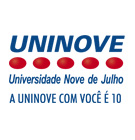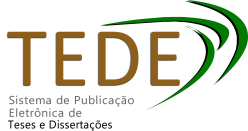| Compartilhamento |


|
Use este identificador para citar ou linkar para este item:
http://bibliotecatede.uninove.br/handle/tede/2268Registro completo de metadados
| Campo DC | Valor | Idioma |
|---|---|---|
| dc.creator | Lazzari, Roberta Delasta | - |
| dc.creator.Lattes | http://lattes.cnpq.br/1842385826616457 | por |
| dc.contributor.advisor1 | Jorge, Luciana Maria Malosa Sampaio | - |
| dc.contributor.referee1 | Jorge, Luciana Maria Malosa Sampaio | - |
| dc.contributor.referee2 | Politti, Fabiano | - |
| dc.contributor.referee3 | Bussadori, Sandra Kalil | - |
| dc.contributor.referee4 | Cimolin, Veronica | - |
| dc.contributor.referee5 | Lima, Núbia Maria Freire Vieria | - |
| dc.date.accessioned | 2020-10-27T19:16:41Z | - |
| dc.date.issued | 2018-11-29 | - |
| dc.identifier.citation | Lazzari, Roberta Delasta. Análise do coeficiente de atrito na marcha de crianças com paralisia cerebral. 2018. 108 f. Tese( Programa de Pós-Graduação em Ciências da Reabilitação) - Universidade Nove de Julho, São Paulo. | por |
| dc.identifier.uri | http://bibliotecatede.uninove.br/handle/tede/2268 | - |
| dc.description.resumo | Objetivo: Caracterizar e Analisar o Coeficiente De Atrito Requerido(COAR) na marcha de Crianças com Paralisia Cerebral(PC). A Presente Tese foi dividida em quatro estudos com objetivos diferentes: Estudo 1) Realizar uma Revisão Sistemática da Literatura sobre a metodologia de avaliação do COA durante a Marcha; Estudo 2) Analisar o comportamento da Curva do COA de um paciente com Paralisia Cerebral Hemiparética. Estudo 3) Analisar e Correlacionar os efeitos do treino de marcha em esteira associado a Estimulação Transcraniana por Corrente Contínua sobre o COA e e outros parâmetros de marcha e funcionalidade. Estudo 4) Analisar e comparar o COA entre crianças com PC e Desenvolvimento Típico(DT). Materiais e Métodos: O presente estudo foi dividido em quatro estudos. No estudo 1 está sendo realizada uma revisão sistemática da literatura sobre a metodolologia de avaliação do COA na marcha. O estudo 2 foi um estudo transversal e as crianças foram submetidas a Avaliação Tridimensional da Marcha. O estudo 3 foi um Relato de Caso, de 1 criança com PC espástica hemiparética, submetida ao protocolo de Estimulação Transcraniana por Corrente Contínua Anódica no córtex motor primário do hemisfério lesionado e estimulação catódica no córtex motor primário contralateral associada ao treino de marcha em esteira por 5x por semana por 2 semanas. Foi realizada a Avaliação Tridimensional da Marcha em 3 momentos(pré-intervenção, pós-intervenção e um mês após as intervenções). Estudo 4 foi um estudo transversal e as crianças foram submetidas a Avaliação Tridimensional da Marcha. Todas as avaliações foram Realizadas no Laboratório Integrado de Análise do Movimento Humano(LIAMH) na Universidade Nove de Julho(UNINOVE). Resultados: O Estudo 1, a ser submetido, até o momento foram lidos 728 títulos e resumos, excluidos 610 artigos dos 118 restantes, 55 artigos estão sendo avaliados, dos 63 que foram lidos na íntegra 10 artigos foram incluídos na presente revisão, dos artigos incluidos todos foram estudos transversal que avaliaram o Coeficiente de Atrito requerido na marcha em diferentes populações. O Estudo 2 foi Publicado na Gait & Posture, a curva do COAR do lado afetado apresentou-se com picos e vales de mais baixos em comparação com o lado não afetado e o controle. O Estudo 3, foi submetido ao Periódico European Journal Of Physical Medicine And Rehabilitation, o COAR foi uma variável sensível na avaliação do paciente submetido ao treinamento de marcha em esteira associado a Estimulação Transcraniana bilateral corrobornado com as alterações das escalas funcionais e variáveis cinemáticas, e O Estudo 4 a ser submetido, observamos que o Primeiro Pico e o Vale do COAR são maiores no lado afetado quando comparado ao lado não afetado e ao grupo com DT, já o Segundo Pico do COAR é menor na mesma comparação. Conclusão: O COAR parece ser uma ferramenta importante para a análise da marcha que facilita a interpretação dos dados sobre o atrito entre o pé e o solo durante a marcha e permite quantificar as alterações ambientais com diferentes tipos de pavimentos, quando se utilizam diferentes tipos de sapatos e entre indivíduos normais e com doenças neurológicas. | por |
| dc.description.abstract | Objective: To characterize and to analyze the required coefficient of Friction (RCOF) in the gait of Children with Cerebral Palsy (CP). This Thesis was divided in three studies with different aims: Study 1) Conduct a Systematic Review of Literature on the COF evaluation methodology during the Gait; Study 2) To analyze the behavior of the COF curve of a patient with Cerebral Hemiparetic Paralysis; Study 3) to analyze and to correlate the effects of gait training on a treadmill associated with Transcranial Stimulation Direct Current (tDCS) with the COF and also, to correlate the COF with others gait parameters; and Study 4) to analyze and to compare the COF between children with CP and Typical Development (TD). Materials and Methods: This thesis is going to be present three studies. The Study 1, a systematic review of the literature on the methodology of COF evaluation in gait. The Study 2 was transversal and the participants of this study will perform the 3D gait analysis.The Study 3 was a Case Report of 1 child with hemiparetic spastic CP, submitted to the Transcranial Anodic Chain Stimulation protocol in the primary motor cortex of the injured hemisphere and cathodic stimulation in the contralateral primary motor cortex associated with treadmill walking 5x per week for 2 weeks. The 3D gait analysis was performed in 3 moments (pre-intervention, post-intervention and one month after the intervention). The Study 4 was transversal and the participants of this study will perform the 3D gait analysis. All evaluations were carried out at the Integrated Laboratory in Analysis of Human Movement (LIAMH) at the University Nove de Julho (UNINOVE). Results: Study 1, to be submitted, 728 titles and abstracts have been read so far, excluding 610 articles from the remaining 118, 55 articles are being evaluated, of the 63 that were already read in full, only 10 articles were included in the present review of articles including all cross-sectional studies that evaluated the coefficient of friction required in gait in different populations. Study 2 was published in Gait & Posture, the RCOF curve on the affected side presented with lower peaks and valleys compared to the unaffected side and the control. Study 3 was submitted to the European Journal of Physical Medicine and Rehabilitation, RCOF was a sensitive variable in the evaluation of the patient submitted to treadmill training in treadmill associated to bilateral Transcranial Stimulation corroborated with changes in functional scales and kinematic variables. Study 4 to be submitted, we observed that the First Peak and RCOF Valley are larger on the affected side when compared to the unaffected side and the TD group, while the Second Peak of the RCOF is smaller in the same comparison. Conclusion: RCOF seems to be an important tool for the gait analysis that facilitates the interpretation of the friction data between the foot and the ground during gait and allows quantifying the environmental changes with different types of pavements when using different types of shoes and among normal individuals and with neurological diseases. | eng |
| dc.description.provenance | Submitted by Nadir Basilio (nadirsb@uninove.br) on 2020-10-27T19:16:41Z No. of bitstreams: 1 ROBERTA DELASTA LAZZARI.pdf: 2156921 bytes, checksum: a67fb02f7094b1b41cc67f1f15c19cbf (MD5) | eng |
| dc.description.provenance | Made available in DSpace on 2020-10-27T19:16:41Z (GMT). No. of bitstreams: 1 ROBERTA DELASTA LAZZARI.pdf: 2156921 bytes, checksum: a67fb02f7094b1b41cc67f1f15c19cbf (MD5) Previous issue date: 2018-11-29 | eng |
| dc.format | application/pdf | * |
| dc.language | por | por |
| dc.publisher | Universidade Nove de Julho | por |
| dc.publisher.department | Saúde | por |
| dc.publisher.country | Brasil | por |
| dc.publisher.initials | UNINOVE | por |
| dc.publisher.program | Programa de Pós-Graduação em Ciências da Reabilitação | por |
| dc.rights | Acesso Aberto | por |
| dc.subject | análise de marcha | por |
| dc.subject | coeficente de atrito | por |
| dc.subject | paralisia cerebral | por |
| dc.subject | estimulação transcraniana | por |
| dc.subject | gait analysis | eng |
| dc.subject | coefficient of friction | eng |
| dc.subject | cerebral palsy | eng |
| dc.subject | transcranial stimulation | eng |
| dc.subject.cnpq | CIENCIAS DA SAUDE | por |
| dc.title | Análise do coeficiente de atrito na marcha de crianças com paralisia cerebral | por |
| dc.title.alternative | Analysis of the coefficient of friction in the gait of children with cerebral palsy | eng |
| dc.type | Tese | por |
| Aparece nas coleções: | Programa de Pós-Graduação em Ciências da Reabilitação | |
Arquivos associados a este item:
| Arquivo | Descrição | Tamanho | Formato | |
|---|---|---|---|---|
| ROBERTA DELASTA LAZZARI.pdf | ROBERTA DELASTA LAZZARI | 2,11 MB | Adobe PDF | Baixar/Abrir Pré-Visualizar |
Os itens no repositório estão protegidos por copyright, com todos os direitos reservados, salvo quando é indicado o contrário.




